One of the world's oldest continuously inhabited places is right here in Amman. Civilizations have been traced back to the pottery Neolithic period. It is on top of one of the 7 jabals (hills) that make up Amman. It is the Amman Citadel. Countries including Italy, Britain, France, Spain and Jordan have been excavating the site since the 1920's, but there is still much that remains un-excavated. Today I want to see the part that has been!
Amman is a large city
. It is the capital, and the place to fly into to get into Jordan. There are a few things I want to see in and around Amman before I move on to other parts of the country.
Things I will see here date back to the Bronze Age. They say there is evidence people settled here over 7,000 years ago, making it one of the oldest inhabited places on earth! Many empires rose and fell over that time period. Amman was called Philadelphia during the Roman era.
I climb the streets one day to visit the Citadel. Of course, you can take a taxi to the Citadel, but what fun is that? It's a challenging walk up the steep streets, but interesting to pass through the ancient neighborhoods bustling with their fruit and vegetable markets.
The Citadel was built between 162-166 A.D. Much of it is still not excavated. But the ruins that have been excavated are worth the climb to the top of this highest hill in Amman
.
The Muslims have a call to prayer 5 times a day. If you are on the top of this mountain when one of the calls for prayer starts, it's an amazing sound to hear the mosques around the city start singing their prayers at the same time from all directions! The music bounces off the mountains and it's an awesome sound!
The walls of the Citadel actually only surround a small portion of where the civilizations lived and worked. Artifacts from the Bronze Age have been uncovered showing the hill itself was a fortress for the commerce and politics over thousands of years. But, there are buildings, tombs, arches and stairs still being discovered that spread far out from the fortress.
There are 3 main sites of ruins to see inside the Citadel:
(1)The Temple of Hercules
(2) The Umayyed Palace
(3) A Byzantine church.
Each one of them from a different civilization in an ancient time period
. The Roman Theater is just down the hill, below the Citadel.
The temple is believed to have been dedicated to the half-god, Hercules, known for his feats of strength and far-ranging adventures in Greek history and mythology. The temple was probably destroyed in one of the catastrophic earthquakes to hit the area.The next historic remains is of the huge Umayyad Palace complex. It was built over the Roman ruins from the Roman civilization before. When they built it in the early 700's, they used much of the existing Roman remains, like the 'colonnaded street' and the foundations of a Roman temple.
Below the mountain is another 'must see' when in Amman. It's the Roman Theater. It was built during the reign of Antonius Pius between 138-161 B.C.
I can see it below as I stand on Citadel HIll. But, I cannot find a way down from the top of the mountain to it. I guess I would need to go back through town and go in another direction
. It's a shame because I can see it from here. It would be so much simpler to just go down the mountainside to it. When the people lived here there were stone steps leading from the Citadel down to the forum at the bottom of the mountain. But, they are not available to use now.
Since I can get a good view of the theater from the Citadel Hill, I take some photos of it and decide that is as close as I will get.
The Jordan sun is very hot by now and the roads are very steep. I will head back into town and get something cold to drink instead. The Citadel ruins are enormous and I have spent a lot of time walking around and looking at them.
It's mind boggling to think of the thousands of years of history I have seen today. I wonder about all the people that lived in these now destroyed places through the centuries. What their lives were like. Their work. Their food. Their homes. Their beliefs. How each great civilization fell and the following one built their lives right on top of their ruins!
NEXT: The Pompeii of the East!
"The Temple of Hercules" (Amman, Jordan)
Tuesday, August 23, 2016
 Amman, Jordan
Amman, Jordan
Other Entries
-
233I Get Locked Up! (Michigan, U.S.A.)
Aug 25364 days prior Ontario, Canadaphoto_camera30videocam 0comment 2
Ontario, Canadaphoto_camera30videocam 0comment 2 -
234A World Without Cars (Michigan, USA)
Aug 26363 days prior Grand Rapids, United Statesphoto_camera63videocam 0comment 3
Grand Rapids, United Statesphoto_camera63videocam 0comment 3 -
235"Amazing Katy" (USA)
Sep 07351 days prior Sedalia, United Statesphoto_camera70videocam 0comment 0
Sedalia, United Statesphoto_camera70videocam 0comment 0 -
236"The Longest Flight" (Cambodia)
Sep 12346 days prior Siem Reap, Cambodiaphoto_camera29videocam 0comment 0
Siem Reap, Cambodiaphoto_camera29videocam 0comment 0 -
237Nasty But Nice! (Cambodia)
Sep 23335 days prior Kampot, Cambodiaphoto_camera76videocam 0comment 0
Kampot, Cambodiaphoto_camera76videocam 0comment 0 -
238The "City of the Crab" (Cambodia)
Sep 24334 days prior Kep, Cambodiaphoto_camera66videocam 1comment 2
Kep, Cambodiaphoto_camera66videocam 1comment 2 -
239The "Do-Nothing Island" (Cambodia)
Sep 25333 days prior Kep, Cambodiaphoto_camera24videocam 0comment 0
Kep, Cambodiaphoto_camera24videocam 0comment 0 -
240A Vietnam Christmas!
Dec 22245 days prior Hue, Vietnamphoto_camera33videocam 0comment 2
Hue, Vietnamphoto_camera33videocam 0comment 2 -
241New Years 2016 (Vietnam)
Jan 01235 days prior Hue, Vietnamphoto_camera37videocam 0comment 2
Hue, Vietnamphoto_camera37videocam 0comment 2 -
242The Man On The River (Vietnam)
Jan 02234 days prior Hue, Vietnamphoto_camera33videocam 0comment 6
Hue, Vietnamphoto_camera33videocam 0comment 6 -
243White Horse Country! (Vietnam)
Jan 06230 days prior Hue, Vietnamphoto_camera66videocam 1comment 1
Hue, Vietnamphoto_camera66videocam 1comment 1 -
244"Uncle Ho Takes a Bath" (Vietnam)
Jan 07229 days prior Hue, Vietnamphoto_camera56videocam 0comment 0
Hue, Vietnamphoto_camera56videocam 0comment 0 -
245Is It Delicious? (Vietnam)
Jan 09227 days prior Hue, Vietnamphoto_camera42videocam 0comment 2
Hue, Vietnamphoto_camera42videocam 0comment 2 -
246EXPLOSIONS and FIRES in Cambodia!
Feb 08197 days prior Siem Reap, Cambodiaphoto_camera23videocam 0comment 6
Siem Reap, Cambodiaphoto_camera23videocam 0comment 6 -
247Life on the Water! (Cambodia)
Feb 10195 days prior Siem Reap, Cambodiaphoto_camera48videocam 2comment 4
Siem Reap, Cambodiaphoto_camera48videocam 2comment 4 -
248Lands of Awe and Wonder! (Middle East)
Aug 203 days prior Kuwait, Kuwaitphoto_camera0videocam 0comment 0
Kuwait, Kuwaitphoto_camera0videocam 0comment 0 -
249The Lowest Place on Earth! (Jordan)
Aug 221 day prior Amman, Jordanphoto_camera22videocam 0comment 1
Amman, Jordanphoto_camera22videocam 0comment 1 -
250"The Temple of Hercules" (Amman, Jordan)
Aug 23 Amman, Jordanphoto_camera26videocam 1comment 1
Amman, Jordanphoto_camera26videocam 1comment 1 -
251Pompeii of the East (Jordan)
Aug 241 day later Jerash, Jordanphoto_camera36videocam 0comment 6
Jerash, Jordanphoto_camera36videocam 0comment 6 -
252"Seeing the Promised Land" (Jordan)
Aug 252 days later Madaba Governorate, Jordanphoto_camera20videocam 3comment 0
Madaba Governorate, Jordanphoto_camera20videocam 3comment 0 -
253STUNNING PETRA! (Jordan)
Aug 263 days later Petra, Jordanphoto_camera51videocam 5comment 1
Petra, Jordanphoto_camera51videocam 5comment 1 -
254"Exploring With INDIANA JONES" (Jordan)
Aug 263 days later Wadi Musa, Jordanphoto_camera46videocam 6comment 2
Wadi Musa, Jordanphoto_camera46videocam 6comment 2 -
255The Hills Above Petra (Jordan)
Aug 274 days later Wadi Musa, Jordanphoto_camera98videocam 10comment 0
Wadi Musa, Jordanphoto_camera98videocam 10comment 0 -
256Camping with the Bedouin's (Jordan)
Aug 285 days later Wadi Rum, Jordanphoto_camera84videocam 4comment 2
Wadi Rum, Jordanphoto_camera84videocam 4comment 2 -
257Walking in "No Man's Land" (Jordan/Israel)
Aug 296 days later Eilat, Israelphoto_camera46videocam 0comment 0
Eilat, Israelphoto_camera46videocam 0comment 0 -
258Who Owns Jerusalem? (Israel)
Aug 296 days later Jerusalem, Israelphoto_camera46videocam 0comment 2
Jerusalem, Israelphoto_camera46videocam 0comment 2 -
259"City of Peace?" Part I (Israel)
Aug 307 days later Jerusalem, Israelphoto_camera70videocam 0comment 1
Jerusalem, Israelphoto_camera70videocam 0comment 1 -
260"City of Peace?" Part II (Jerusalem, Israel)
Aug 318 days later Jerusalem, United Statesphoto_camera79videocam 0comment 0
Jerusalem, United Statesphoto_camera79videocam 0comment 0 -
261"Death On The Mountain" (Masada, Israel)
Aug 318 days later Masada, Israelphoto_camera51videocam 2comment 0
Masada, Israelphoto_camera51videocam 2comment 0 -
262"The Walls Came Tumbling Down" (Jericho)
Aug 318 days laterJerichophoto_camera15videocam 0comment 0 -
263ABRAHAM'S TOMB (Hebron, Palestine)
Sep 019 days laterHebronphoto_camera76videocam 3comment 0 -
264"Little Town of Bethlehem" (Palestine)
Sep 0210 days laterBethlehemphoto_camera75videocam 1comment 3 -
265"BETHLEHEM'S WALL" (Palestine)
Sep 0210 days laterBethlehemphoto_camera63videocam 3comment 0 -
266"The Announcement in Nazareth" (Israel)
Sep 0412 days later Nazareth, Israelphoto_camera64videocam 3comment 0
Nazareth, Israelphoto_camera64videocam 3comment 0 -
267"JESUS IN NAZARETH" (Israel)
Sep 0614 days later Nazareth, Israelphoto_camera73videocam 1comment 0
Nazareth, Israelphoto_camera73videocam 1comment 0 -
268Tiberias, At The Sea of Galilee (Israel)
Sep 0715 days later Tiberias, Israelphoto_camera81videocam 0comment 0
Tiberias, Israelphoto_camera81videocam 0comment 0
Comments
2025-05-22
Comment code: Ask author if the code is blank

 Amman, Jordan
Amman, Jordan
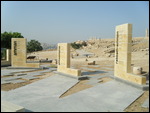
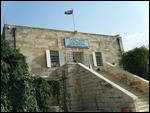
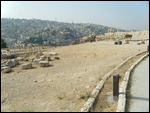







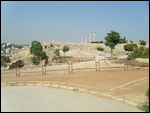
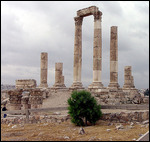
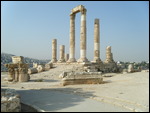
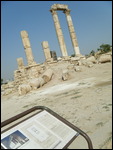

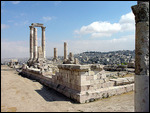
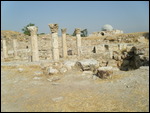
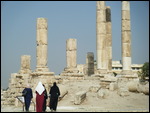
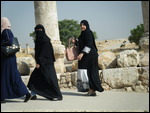

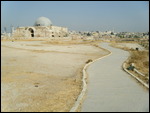
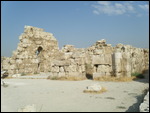
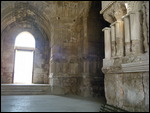
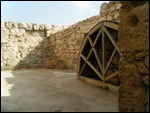
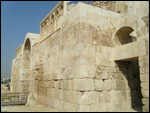
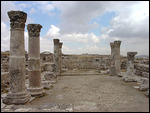
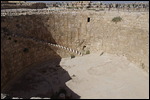
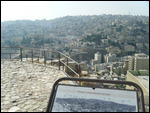
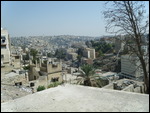

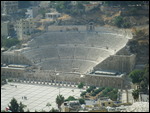
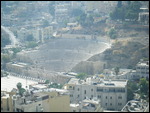
Jackie Koop
2016-10-03
Wow, amazing stuff. Thanks for sharing.